 Guided missile Frigates 1976-2022:
Guided missile Frigates 1976-2022:D 614 FS Cassard, D 615 Jean Bart, Courbet* D 616, D 617 (cancelled)
Cold war French Navy:
FS Jean BartFS Arromanches | Bois Belleau class | Clemenceau class | FS Jeanne d'Arc | PA 28 | PH 75 | FS Charles de Gaulle | 2030 PANG
Chateaurenault class | FS De Grasse | FS Colbert
Surcouf class | Duperré class | La Galissonière | Suffren class | Tourville class | Georges Leygues class | Aconit | Cassard Class | Lafayette class | Forbin class | Aquitaine class
La Creole class | Narval class | Arethuse class | Daphne class | Gymnote | Le Redoutable class | Agosta class | Rubis class | Amethyste class | Le Triomphant class
Le Corse class (1952) | Le Normand class (1954) | Cdt Riviere class (1958) | Estiennes D’Orves class (1973) | Floreal class (1990)
Issole | EDIC class | Trieux class | Ouragan class | Champlain class | Bougainville | Foudre class | CDIC class | Mistral class
The Cassard class (Type F70 AA) were the two last “classic” anti-air warfare destroyers (before stealth was introduced) of the French Navy. They were built in the 1980s and only the first two were completed. The next two were cancelled due to post-cold war budgetary cuts. This was essentially air defence variant of the Georges Leygues class with a completely new armament and propulsion system sharing the same hull. These succeeded to the modernized Surcouf class, to provide air cover for the aeronaval group, or a convoy. They were fitted with better 3D radar to manage air assets coordination as well as force aircraft control through Link 16. Unlike the Georges Leygues they opted for diesels, making them the fastest diesel surface combatants at 30+ knots. Despite being primary AAW frigates with SM-1 Block VI standard missiles, they were well rounded for other missions. They saw plenty of action, assigned as primary escort of FS Charles de Gaulle. Cassard was decommissioned in 2019 and Jean Bart in 2021. They were replaced by FREMM class frigates. In many ways, the La Fayette class were a stealth version of the design (next stop).
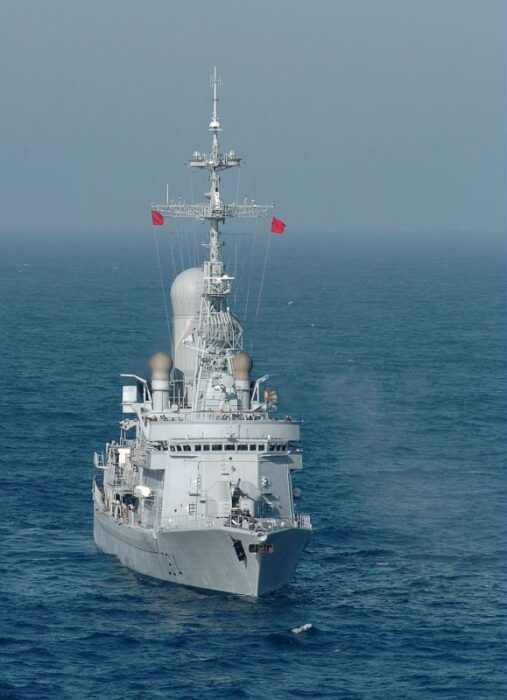
Development
The Georges Leygues class was considered in 1979 a solid design and a base to use for an adaptation for the AAW role, according to replacement schedule for the modernized 1950s T47 Surcouf class destroyers. Four ships were planned to replace the same number of T 47-class anti-air warfare vessels schedule for retirement. Initially four ships in class were procured, with the third and fourth hulls authorized FY1983. However it’s not the cold war ending but the United States which chose to terminate the production of the Standard SM-1MR missile which ended the last pair. Indeed, they were equipped by recycling older systems, two RIM-24 Tartar weapons systems from the Bouvet decommissioned in 1982 and Kersaint decommissioned in 1983, removed, sent to the US to be converted into RIM-66 Standard launchers. In the 1990s the choice of non-VLS approach was criticized as if the radar was capable of tracking many more targets at once, only two fire and fire control radars enabled only two missiles on targets whereas a Ticonderoga with AEGIS could manage a dozen at once.
Lessons were learned from the Falklands War and made in aluminium to improve fire resistance, reduce the mass and so improve stability. This was not enough as they later received concrete-filled bulges. The choice of an exclusively Diesel propulsion brought several advantages in terms of infrared signature, reduced interference with sensors, weight, and diesel consumption after the 1979 oil crisis. The Cassard class were not considered “stealthy”, but nevertheless incorporated structural elements coated in a way to reducing detection range or absorb radar waves.
Meanwhile, the design period led to multiple revisions including during construction, which was also marked by budgetary cuts, going as far as construction suspensions. Therefore, both were built at Lorient, laid down in 1982 for the first, completed in 1988 after six years, whereas her sister initially planned for the same year was delayed until FY86. She was launched in 1988 and completed in late 1991, after also six years. By that stage the new and radically different Lafayette class were just launched. Each frigate final cost was for 2 million hours of work and million hours of studies and 600 million euros, making them the costliest surface ships ever built in the French Navy aside the aircraft carriers.
Design of the class
Hull and general design
The class shared a common hull design with the Georges Leygues class. The superstructure was composed of a lightweight aluminum alloy resistant to fire and corrosion. At first it was decided to retake the propulsion system of the former destroyers, but the idea was abandoned early on due to the hot exhaust from the Olympus turbines of Georges Leygues considered incompatible with the more complex arrays required in the new design. Since they had an extensive combat suite they could be used as air command ships and were crewed by 244 personnel with accomodations for 251.
The design was similar up to the hull main weather deck to the previous class with the typical clipper hooked nose, slight slope, tall, roomy and rectangular sections all along, a double counterkeel set either beam with active stanbilizers in the middle, fixed hull sonar radome in the bow chin, two shafts and their struts, and single, large rudder.
As for the structures, the deck was divided into the bridge block forward, a relatively low bridge deck, sensors of two levels with a taller structure aft and the quad led lattice carrying the main sensors (it was strenghtened during the later upgrades and a taller mast installed). The SSMs were located on two quad launchers angled up facing either side between the two islands. The aft one comprised a set of exhausts from the funnel on either side and a structure supporting the main DRBJ 11B radome and two smaller DRB-33 radomes located either side, low deck.
The two main fire control radars for the SM-1 Standard Missiles were located aft of this rear structure. Next the single “Tartar” was installed on a lower deck with its reload system below, and the hangar was located aft for a single helicopter, the helideck, then the ASW and aft deck operation below, partly open. The ship carried only a fixed hull sonar, no VDS aft.
Powerplant
The Cassard ditched the previous Gas Turbines for four SEMT Pielstick 18 PA6V 280 BTC diesels capable together of powering the ships at 32,200 kW (43,200 hp) on two shafts. Top speed was 29.5 knots (54.6 km/h; 33.9 mph) and range of 8,000 nautical miles (15,000 km; 9,200 mi) at 17 knots (31 km/h; 20 mph). The diesels are all fitted for double super-charging for emergency runs at very high speeds. Despite an increase in displacement, the Cassards were capable to accelerate well past 30 knots thanks a modified propeller profile, making them among the world’s fastest diesel-powered ships. These diesels were also placed on flexible mountings to reduce noise signature wheeras their exhausts goes through mufflers to reduce considerably the heat signature.
730t of diesel was carried for a full speed range of 4665 nm.
Armament
100mm/55 M1968
The always dependable Creusot-Loire Compact 100 mm/55 Mod 68 DP gun was placed alone on the foredeck, before the main bridge structure. This made the foredeck relatively short for that class of ships. It was a pretty versatile model. The second batch likely had a more modern, faster firing and fully automated modèle 100 TR Compact, 19 tons for 90 rpm.
For a long time, the possibility of adding a second 100 mm was considered aft but this was abandoned in favor of an onboard helicopter, bringing a new dimensions to ASW defence.
⚙ specifications 100 mm/55 M68 |
|
| Weight | 22 tonnes (49,000 lb) |
| Barrel lenght | 55 calibres 5,500 mm (220 in)x 100 mm (3.9 in) |
| Elevation/Traverse | 29°/s, 40°/s |
| Loading system | Semi-auto |
| Muzzle velocity | 870 m/s (2,900 ft/s) |
| Range | 17,000 m (elevation 40°), 12,000 m surface, 6,000 m AA |
| Guidance | Radar |
| Crew | 2 operators |
| Round | 100x700mmR 23.6 kilograms (52 lb)+ 13.5 kilograms (30 lb) |
| Rate of Fire | 78 rpm |
Exocet MM40 Block 1
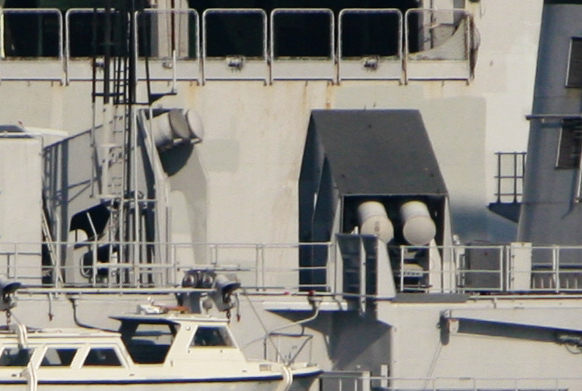
These MM38 (later MM40) Exocet SSM missiles were installed from the start, placed on two rows of three canisters angled, facing forward behind the bridge structure.
The was first deployed on warships from 1974. Range: 42 km.
⚙ specifications MM38 (1974) |
|
| Weight | 780 kg (1,720 lb) |
| Dimensions | 6 m (19 ft 8 in) x 34.8 cm (1 ft 1.7 in) wp 1.35 m (4 ft 5 in) |
| Propulsion | Solid propellant engine |
| Speed | Mach 0.93 or 1,148 km/h (713 mph; 620 kn) |
| Range | 40 km (25 mi; 22 nmi) |
| Guidance | Inertial, active radar homing, and GPS |
| Ceiling | Sea skimming |
| Payload | 165 kg (364 lb) |
RIM-66 SM-1 Block VI SAM
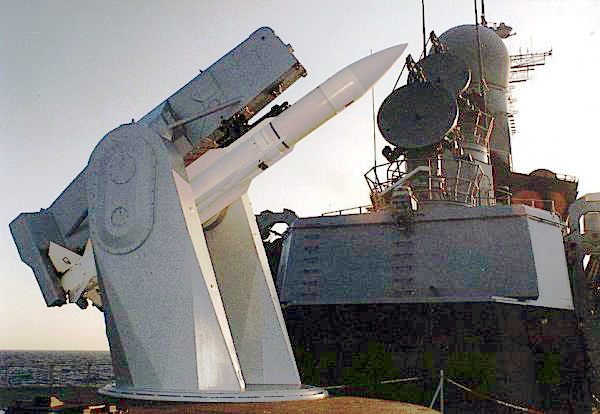
In French service it is called the Tartar (it shares the same launcher and many sub-systems). This Mk 13 launcher can deliver quickly up to 40 Standard SM-1MR anti-air missiles. Each have semi-active radar homing out to 46 km (29 mi) at Mach 2. Ceiling limit is of 18,288 m (60,000 ft). Two SPG 51 tracker/illuminators radars taken off the T 47 destroyers Bouvet and Kersaint and refurbished in the US were provided and installed aft in superfiring positions to guide two missiles at once. Still, this capabuility by 1990 standards pale in comparison to true AEGIS systems using VLS.
⚙ specifications RIM-66 MISSILE |
|
| Weight | 1,500 lb (680 kg) |
| Dimensions | 15 ft 6 in x 13.5 in x 3 ft 6 in (4.72 x 34.3 cm x 1.07 m wp) |
| Propulsion | Dual thrust, solid-fuel rocket |
| Speed | Mach 3.5 (4,290 km/h; 2,660 mph; 1.19 km/s) |
| Range | 40 to 92 nmi (74 to 170 km) |
| Guidance | Monopulse semi-active homing, inertial mid-course. |
| Ceiling | 25,000 m (82,000 ft) |
| Payload | Blast fragmentation warhead |
Artillery: 2x 20mm
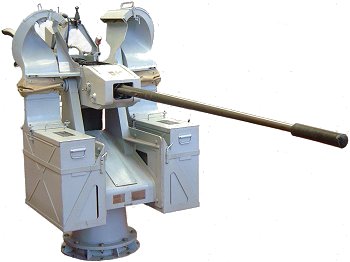 Later were added two GIAT 20F2 20mm machine guns in the superstructure close to the bridge to defend against incoming close-in asymetric threats, and later completed by two 12.7 mm or cal.0.5 Browning HMGs for the same reason.
Later were added two GIAT 20F2 20mm machine guns in the superstructure close to the bridge to defend against incoming close-in asymetric threats, and later completed by two 12.7 mm or cal.0.5 Browning HMGs for the same reason.
GIAT 20F2 20mm machine gun:
French weapon system long derived from the Swiss Oerlikon, this Gas unlocked, delayed blowback cannon was developed from the GIAT M693 in the 1980s, used by a large variety of French ships (nearly all) to this day.
Specs:
332 kg (732 lb), 2,600 mm (100 in) barrel 1,970 mm (78 in) elevation −15° to + 65°
Shell 20×139mm, 900 round/min, mv 1,050 m/s (3,400 ft/s) RA 1,500 m (4,900 ft) against aerial targets.
Torpedoes
L5 mod 4: The L5 Torpedo model 4 took advantage of 4x better sonar ranges and three models were developed, the Mod 4. was the upgraded last variant of the mode. They could operate at depths of 1,800 feet (550 m) if needed, and were powered by a Silver-zinc Battery to 10,000 yards for Mod.4 and carried a 440 lbs. (200 kg) HBX-3 or TNT warhead. It was also capable of engaging a surface target as well, but were primarily ASW weapons. These were fixed tubes located at the end of the bridge structure at deck level.
SADRAL CIWS
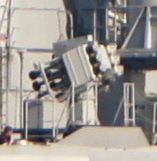 The Cassards differed from the Leygues by their two Sadral sextuple launcher located on either side of the hangar aft. They could operate up to 39 Mistral CIWS anti-air missiles.
The Cassards differed from the Leygues by their two Sadral sextuple launcher located on either side of the hangar aft. They could operate up to 39 Mistral CIWS anti-air missiles.
The Mistrals are short range anti-missile vectors using infrared homing and with a range of 4 km (2.5 mi). They carried a 3 kg (6.6 lb) warhead and are specialized to deal with skimmer SSMs (antiship missiles), engage incoming targets down to 10 ft (3.0 m) above sea level.
The SADRAL possesses a full battery of 6 missiles, three on eitehr side, and is remotelly operated. It entered service in 1989.
It differs from the Simbad launcher, which have a single operator and two missiles, one on each arm. The operator possesses an scope with IR channels and x10 magnifications, in the later versions with augmented reality localization of the incoming missile head.
The full missile is 0.88m including initial booster for 90 mm diameter and can be used as MANPAD as well. Mistral Mk 3s were fitted to three La Fayette-class frigates as well.
Sensors
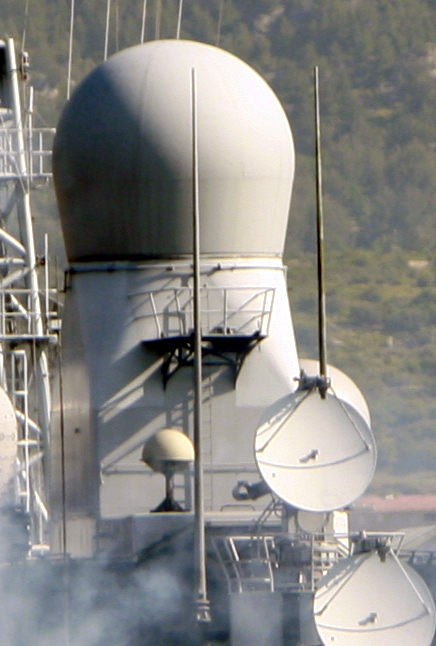
Main DRBJ11B radome
DRBJ11B: Main 3D radar, located between funnels amidships.
DRBV26C: Sentry, Early Warning radar located on top of the bridge structure.
DIBV2A: Infrared warning system.
DRBN34: Two systems, navigation and landing radars located aft.
DUBV24C: Hull sonar, chin bow.
Syracuse II: Satellite communication system (Satcom), two radome antennae.
ARBR17: radar detector
SAIGON: Radio emission detector
Thales SMART-S MK2: Replaced DRBJ11B
Protection
ARBB 33 jammer: Two systems instlled close to the Syracuse radome up amidships.
DAGAIE: Standard French decoy launchers. Located on either side of the bridge structure, upper deck.
SAGAIE NG: Updated Decoy launchers (after modernization, replaced the Dagaie systems)
Air Group
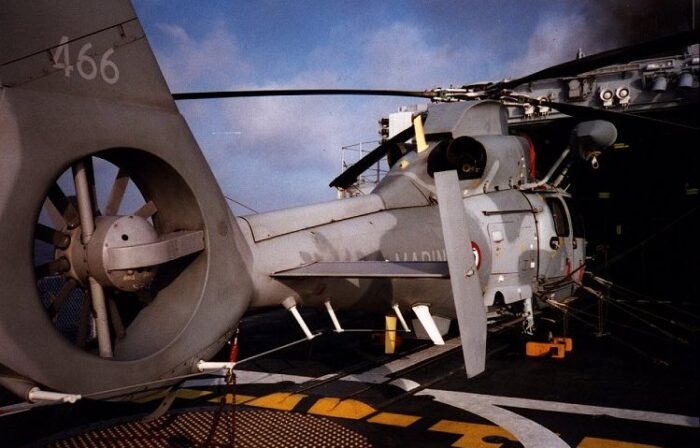
The two frigates carried a single ASW helicopter in a hangar aft with all maintenance facilities, followed by a helideck. Originally she had the Eurocopter AS 565 Panther, later replaced by the Westland Lynx. The SAMAHE 210 helicopter handling system was railored for various types of helicopters with munitions which could be brought to position for weapon loadouts and assist arming on the deck. In their career they saw other navies’s helicopters landing, notably British RN Lynxes and USN SH-60 Seahwawk. It seems however the deck was too light structurally for the EH-101.
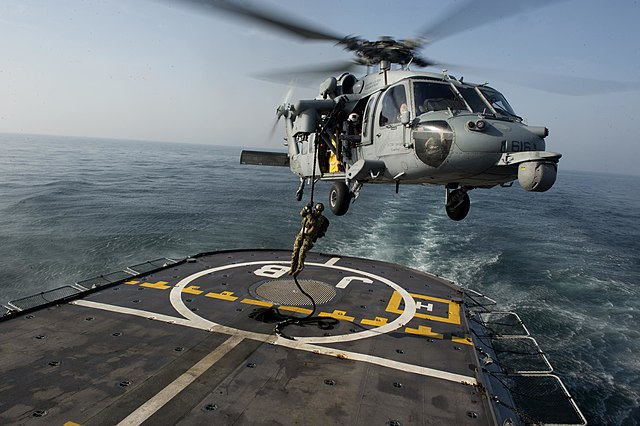
Modernization
During maintenance operations, improvements consisted in electronics and weapons upgrade and modernization of the propulsion energy data monitoring system as well as strengthening the hull and improving stability. In 1992, Cassard saw the removal of the DRBV-15 and DRBV-26A radars replaced by the DRBJ-11B and DRBV-26C radars.
In 2002 both ships saw the removal of their DIBV-1A ECM suite, as well as the SENIT-6 CCS command duite for, repsectively the DIBV-2A suite and SENIT-6/8 CCS.
In 2005 to deal with asymetric threats, their two 20mm/70 Oerlikon were replaced by two remote 20mm/90 F2 guns (they had two browning M2 from the start in complement).
In 2010 Cassard and in 2012, Jean Bart saw their DIBV-2A suite replaced by the EOMS-NG.
In 2012, Jean Bart and in 2014 Cassard saw teh replacement of their DRBJ-11B radar for the Smart-S Mk 2.

conway’s profile

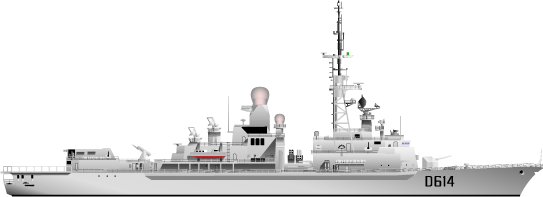
Cassard before and after modernization (author’s old illustrations)
⚙ specifications |
|
| Displacement | 4,500 tons, 5,000 full load |
| Dimensions | 139 x 14 x 6.5m (456 ft x 45 ft 11 in x 21 ft 4 in) |
| Propulsion | 2 shafts, 4× SEMT Pielstick 18PA6-V280 BTC diesels 31,000 kW (42,000 hp) |
| Speed | 29.5 knots (54.6 km/h; 33.9 mph) |
| Range | 8,000 nmi (15,000 km; 9,200 mi) at 17 kn (31 km/h; 20 mph) |
| Armament | Mk 13 SM-1MR, 8× MM40 Exocet, 2× 55cm TTs, 100 mm/55 Mod 68, 2× 20 mm F2, 4× 12.7mm HMG, 2× Mistral CIWS |
| Protection | Thomson-CSF ARBB-33 jammer |
| Sensors | ARBR 17B, DIBV 1A Vampir, DRBJ 11B, DRBV 26C, Racal DRBN 34A, DRBC 33A, SPG-51C, DUBA 25A, SENIT 68 |
| Air Group | AS 565 Panther anti-submarine helicopter |
| Crew | 250 |
Career of the Cassard class
 Cassard D 614
Cassard D 614
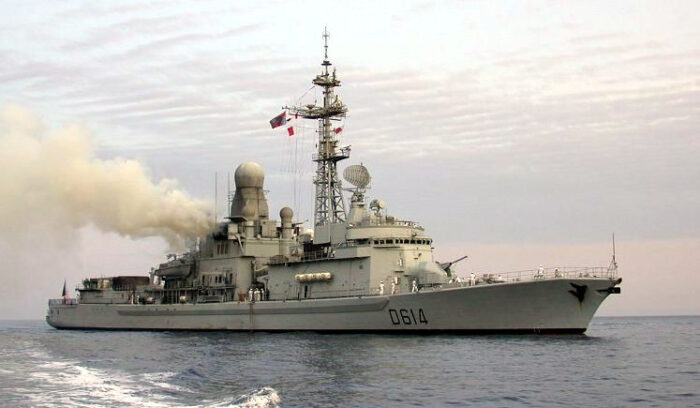
D 614 was laid down at Arsenal de Lorient (Shipyard) on 3 September 1982, launched on 6 February 1985 and completed 28 July 1988. She was first assigned to Brest for a year, then Toulon from 27 July 1989, integrated into the Naval Action Force in 1992. Main mission was to provide AAW cover for any naval force, in particular Foch and later Charles de Gaulle’s CBG.
She often was relieved by Jean Bart in her mission. No record for 1992-98. In 1999, she escorted Foch in the Adriatic within Task Force 470 taking part in multiple air strike system on Serbain military targets, on the territory of ex-Yugoslavia.
In 2002 and 2006, she was deployed in Afghanistan following the September 11 attacks, and took over missions of sea control and close protection of FS Charles de Gaulle in Operation Enduring Freedom. In 2006, Cassard controlled ships in and out of Beyrouth and the coast of Lebanon after the Israeli intervention against the Hezbollah.
In 2006, Cassard took part in Mission Agapanthe in the Indian Ocean with the Charles de Gaulle carrier battle group, and was part of Operation Baliste.
In 2011 she was sent off the coast of Libya during Operation Harmattan.
On 13 November 2013, she was deployed in the Eastern Mediterranean as part of a cooperation with the Lebanese Navy.
In 2015-2016, the Cassard was part of Operation Chammal, escort Charles de Gaulle the strikes on Da’esh and the Levant forces (ISIS) in Iraq.
On 14 April 2018, she participated in Operation Hamilton in Syria. The goal was to lead an operation under French command to destroy Bashar al-Assad’s stock of chemical weapons.

During her final deployment on 20 November 2018, while patrolling in the northern Indian Ocean for a bilateral “Pearl of the West” exercise in Kuwait she rescued the Indian bitumen tanker Durban Queen in distress with her Panther helicopter, saving all 12 crew as she capsized in three rotations. She took part in the multinational operation Manitou in the Indian Ocean in early 2019. Cassard with the Australian Navy intercepted dhows and seized 670 kg of heroin in February and 2 tonnes of cannabis off Oman on 22 February.
Cassard was decommissioned on 15 March 2019, disarmed and stripped intil 20 December 2019, hull awaiting dismantling afterwards. In the autumn of 2023, it was announced to take place in Gironde, Bassens (Vinci group). She was towed there in February 2024 and joined three other former ships of the French Navy which there in November 2023, Suffren, Meuse and Jean de Vienne.
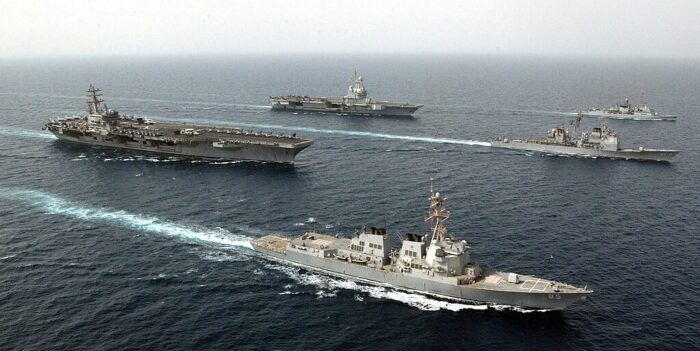
Persian Gulf (April 27, 2006) – The Nimitz-class aircraft carrier USS Ronald Reagan (CVN 76), French nuclear powered surface vessel FS Charles Degall (R-92), Cassard-class destroyer FS Cassard (D-614), guided missile cruiser USS Vicksburg (CG 69), and the guided-missile destroyer USS McCampbell (DDG 85) conduct joint operations in the Persian Gulf during a passing exercise (PASSEX). The U.S. and France are part of the coalition effort currently conducting Maritime Security Operations (MSO) in the region. U.S. Navy photo by Chief Photographer’s Mate Spike Call (RELEASED)
 Jean Bart D 615
Jean Bart D 615
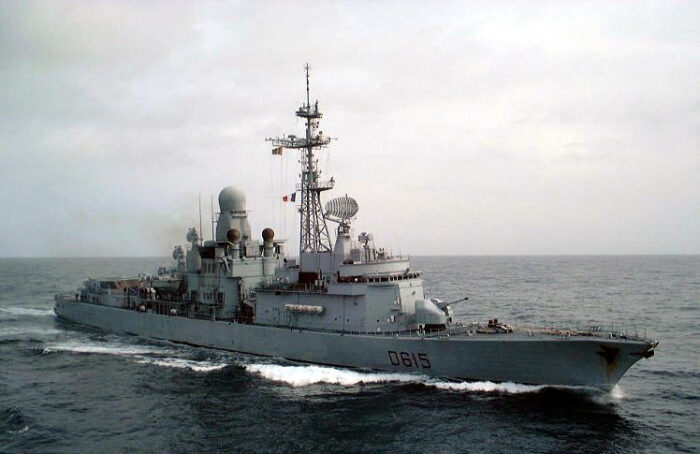
D 615 was laid down at the same Lorient shipyard on 12 March 1986, launched on 19 March 1988 and completed on 21 September 1991. Initially designated “anti-aircraft corvette”, which was confusing due to their designation as destroyers (D) they became anti-aircraft frigate (FAA) in June 1988, to harmonize with foreign navies capabilities. It was especially true after 1994 definitive return into NATO. Main mission was to lead anti-aircraft missions in the deployment area of a naval force. Like Cassard, she was based in Toulon, completed as the cold war ended.
She missed the Gulf War, training all along 1992. No records for 1993-2000 but she likelt saw action like her sister around Yugoslavia during the NATO permanence and operations there, relieving her sister. Typically she was integrated into the carrier battle group for each deployment.
From December 2001, she was part of the allied response in Afghanistan after the September 11 attacks between sea control and close protection of FS Charles de Gaulle CBG during the Heracles mission against ISIS.
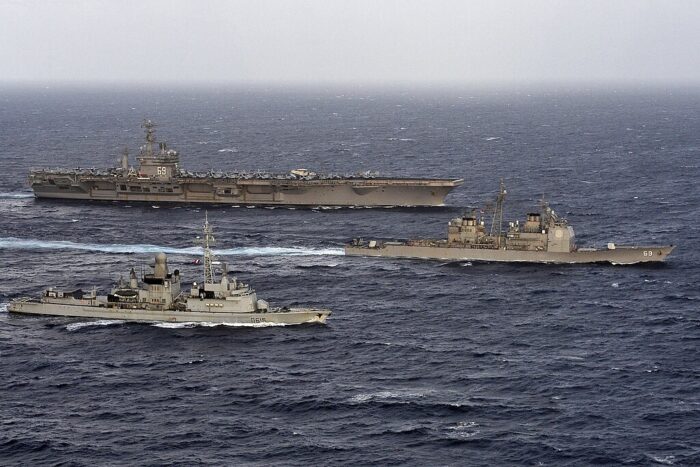
In 2002-2003, Jean Bart had her major overhaul modernization, complete redesign of her combat system, reinforcement of her hull and addition of bulges filled with 100 tons of concrete to increase stability after many additions. During tests in September 2003, a fire broke out in her propulsion compartment which forced her be immobilization for a few months for repairs.
From February to June 2004, Jean Bart took part in the Agapanthe mission in the Indian Ocean and the Persian Gulf. In July-August 2006, she took part in Operation Baliste in the Lebanon War, during which she escorted the amphibious fleet tasked of evacuation of nationals, and evacuated herself 270 people between Beirut and Larnaca.
On 12 April 2008, she helped capture pirates which hijacked the luxury yacht MY Le Ponant. She took part in Operation Unified Protector until back in April 2011.
In October 2014, she entered the US Fifth Fleet and joined up with CTF 50 for Opération Chammal and she joined the United States Navy’s Commander Task Force 50 (CTF 50) as an escort.
On 11 October 2019, she teamed with the frigate HMS Montrose to intercept a suspicious dhow in the Arabian Sea, seizing 170 kilograms (370 lb) of narcotics.
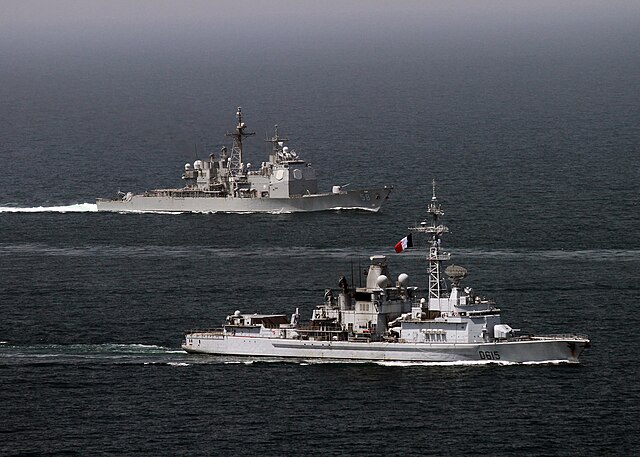
From 4 May to 1 June 2020, she took part in Operation Irini, enforcing the arms embargo on Libya. She was in the Indian Ocean until March 2021, expected to decommission in Spring 2021 but replacement by the FREMM-class frigate Alsace was postponed. She was temporarily redeployed on a final mission to Greece in April to demonstrate her capabilities afer an offer to the Hellenic Navy (Later FDI frigates were ordered instead). Originally scheduled to be withdrawn from active service in 2012, Jean Bart waited for her replacement at first by the Chevalier Paul and later the FREMM Alsace. When it was concerned, she was sent for BU. Sponsor city is Dunkirk since July 1990. The birthplace of the XVIIIth cent. French corsair.
She is waiting her fate and probably be towed to Gironde Vinci’s Bassens facility to be BU in 2025.
Read More/Src
Books
Gardiner, Robert; Chumbley, Stephen & Budzbon, Przemysław (1995). Conway’s All the World’s Fighting Ships 1947-1995.
Saunders, Stephen (ed.). Jane’s Fighting Ships, 2004-2005 (107 ed.). Surrey: Jane’s Information Group.
Miller, David; Miller, Chris (1986). Modern Naval Combat. USA: Salamandar Books. pp. 100–101.
Gardiner and Chumbly, p. 115 Saunders, p.230
French Navy Frigate, Aircraft Carrier to be fitted with new Thales SMART-S Mk2 radar in 2013″. Navy Recognition.
Links
https://web.archive.org/web/20121018135025/https://www.netmarine.net/bat/fregates/jeanbart/index.htm
https://web.archive.org/web/20121018135012/http://netmarine.net/bat/fregates/cassard/index.htm
https://www.defnat.com/e-RDN/vue-article-cahier.php?carticle=115&cidcahier=1183
https://web.archive.org/web/20120904194254/http://www.netmarine.net/bat/fregates/jeanbart/caracter.htm
https://web.archive.org/web/20130214015117/http://netmarine.net/bat/fregates/cassard/caracter.htm
https://en.wikipedia.org/wiki/Op%C3%A9ration_Chammal
https://www.navypedia.org/ships/france/fr_dd_cassard.htm
https://en.wikipedia.org/wiki/Cassard-class_frigate
https://fr.wikipedia.org/wiki/Classe_Cassard

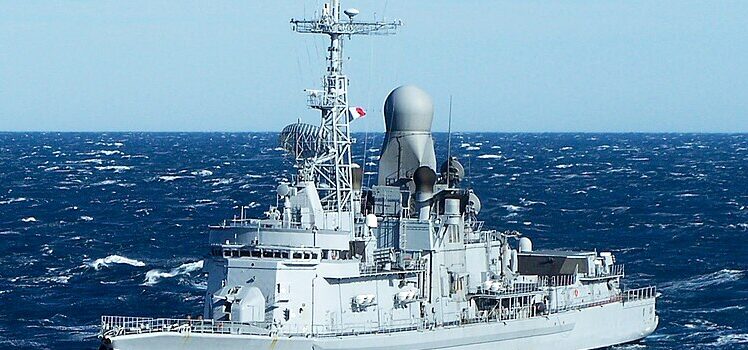
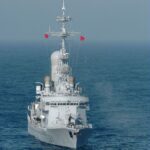
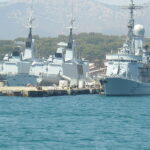
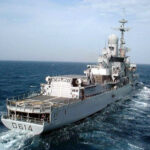
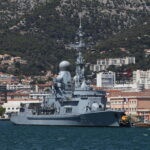
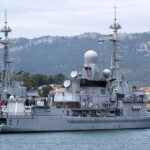
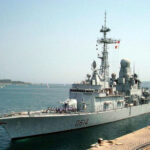
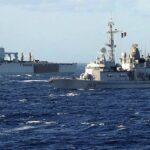
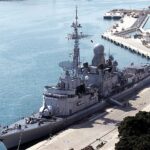
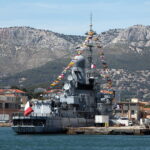
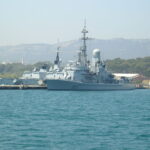
 Latest Facebook Entry -
Latest Facebook Entry -  X(Tweeter) Naval Encyclopedia's deck archive
X(Tweeter) Naval Encyclopedia's deck archive Instagram (@navalencyc)
Instagram (@navalencyc)





 French Navy
French Navy Royal Navy
Royal Navy Russian Navy
Russian Navy Armada Espanola
Armada Espanola Austrian Navy
Austrian Navy K.u.K. Kriegsmarine
K.u.K. Kriegsmarine Dansk Marine
Dansk Marine Nautiko Hellenon
Nautiko Hellenon Koninklije Marine 1870
Koninklije Marine 1870 Marinha do Brasil
Marinha do Brasil Osmanlı Donanması
Osmanlı Donanması Marina Do Peru
Marina Do Peru Marinha do Portugal
Marinha do Portugal Regia Marina 1870
Regia Marina 1870 Nihhon Kaigun 1870
Nihhon Kaigun 1870 Preußische Marine 1870
Preußische Marine 1870 Russkiy Flot 1870
Russkiy Flot 1870 Svenska marinen
Svenska marinen Søværnet
Søværnet Union Navy
Union Navy Confederate Navy
Confederate Navy Armada de Argentina
Armada de Argentina Imperial Chinese Navy
Imperial Chinese Navy Marinha do Portugal
Marinha do Portugal Mexico
Mexico Kaiserliche Marine
Kaiserliche Marine 1898 US Navy
1898 US Navy Sovietskiy Flot
Sovietskiy Flot Royal Canadian Navy
Royal Canadian Navy Royal Australian Navy
Royal Australian Navy RNZN Fleet
RNZN Fleet Chinese Navy 1937
Chinese Navy 1937 Kriegsmarine
Kriegsmarine Chilean Navy
Chilean Navy Danish Navy
Danish Navy Finnish Navy
Finnish Navy Hellenic Navy
Hellenic Navy Polish Navy
Polish Navy Romanian Navy
Romanian Navy Turkish Navy
Turkish Navy Royal Yugoslav Navy
Royal Yugoslav Navy Royal Thai Navy
Royal Thai Navy Minor Navies
Minor Navies Albania
Albania Austria
Austria Belgium
Belgium Columbia
Columbia Costa Rica
Costa Rica Cuba
Cuba Czechoslovakia
Czechoslovakia Dominican Republic
Dominican Republic Haiti
Haiti Hungary
Hungary Honduras
Honduras Estonia
Estonia Iceland
Iceland Eire
Eire Equador
Equador Iran
Iran Iraq
Iraq Latvia
Latvia Liberia
Liberia Lithuania
Lithuania Mandchukuo
Mandchukuo Morocco
Morocco Nicaragua
Nicaragua Persia
Persia San Salvador
San Salvador Sarawak
Sarawak Uruguay
Uruguay Venezuela
Venezuela Zanzibar
Zanzibar Warsaw Pact Navies
Warsaw Pact Navies Bulgaria
Bulgaria Hungary
Hungary

 Bundesmarine
Bundesmarine Dutch Navy
Dutch Navy Hellenic Navy
Hellenic Navy Marina Militare
Marina Militare Yugoslav Navy
Yugoslav Navy Chinese Navy
Chinese Navy Indian Navy
Indian Navy Indonesian Navy
Indonesian Navy JMSDF
JMSDF North Korean Navy
North Korean Navy Pakistani Navy
Pakistani Navy Philippines Navy
Philippines Navy ROKN
ROKN Rep. of Singapore Navy
Rep. of Singapore Navy Taiwanese Navy
Taiwanese Navy IDF Navy
IDF Navy Saudi Navy
Saudi Navy Royal New Zealand Navy
Royal New Zealand Navy Egyptian Navy
Egyptian Navy South African Navy
South African Navy






























 Ukrainian Navy
Ukrainian Navy dbodesign
dbodesign